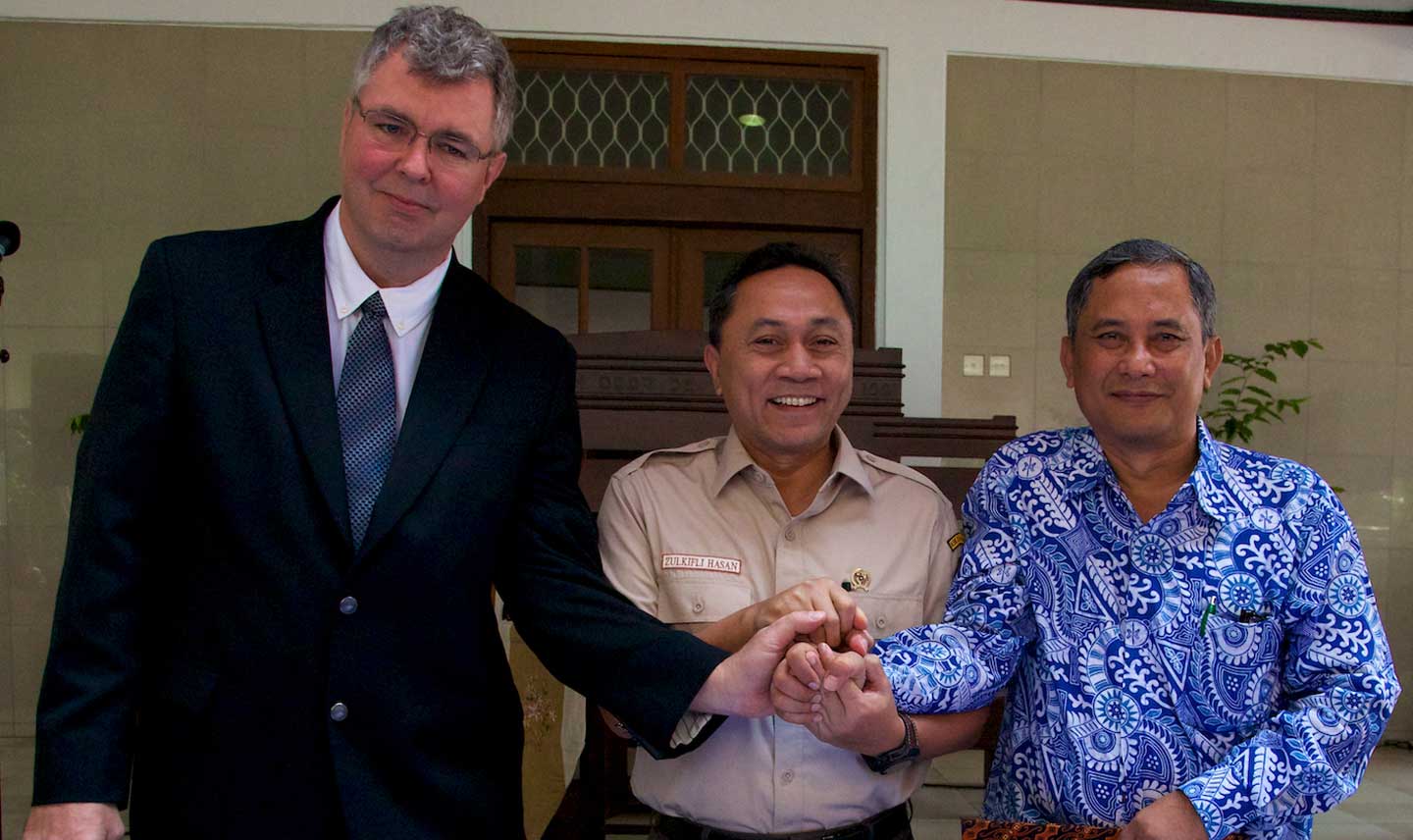


In 2013, as CIFOR turned 20, we reflected on our many achievements.
Since it was founded 20 years ago, the Center for International Forestry Research has become known for its high-quality research, knowledge exchange and global reach.
CIFOR continues to improve its practices and build partnerships to further strengthen the quality, relevance and impact of its research.
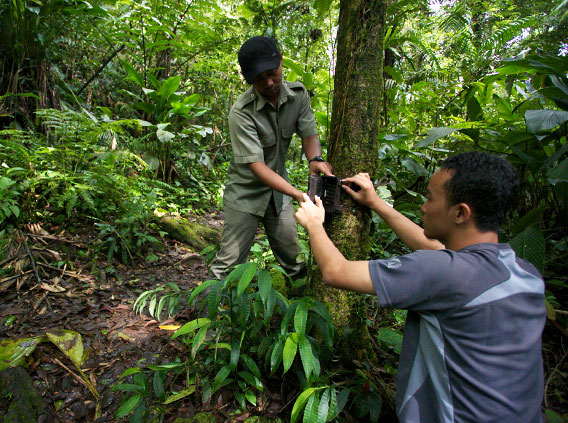

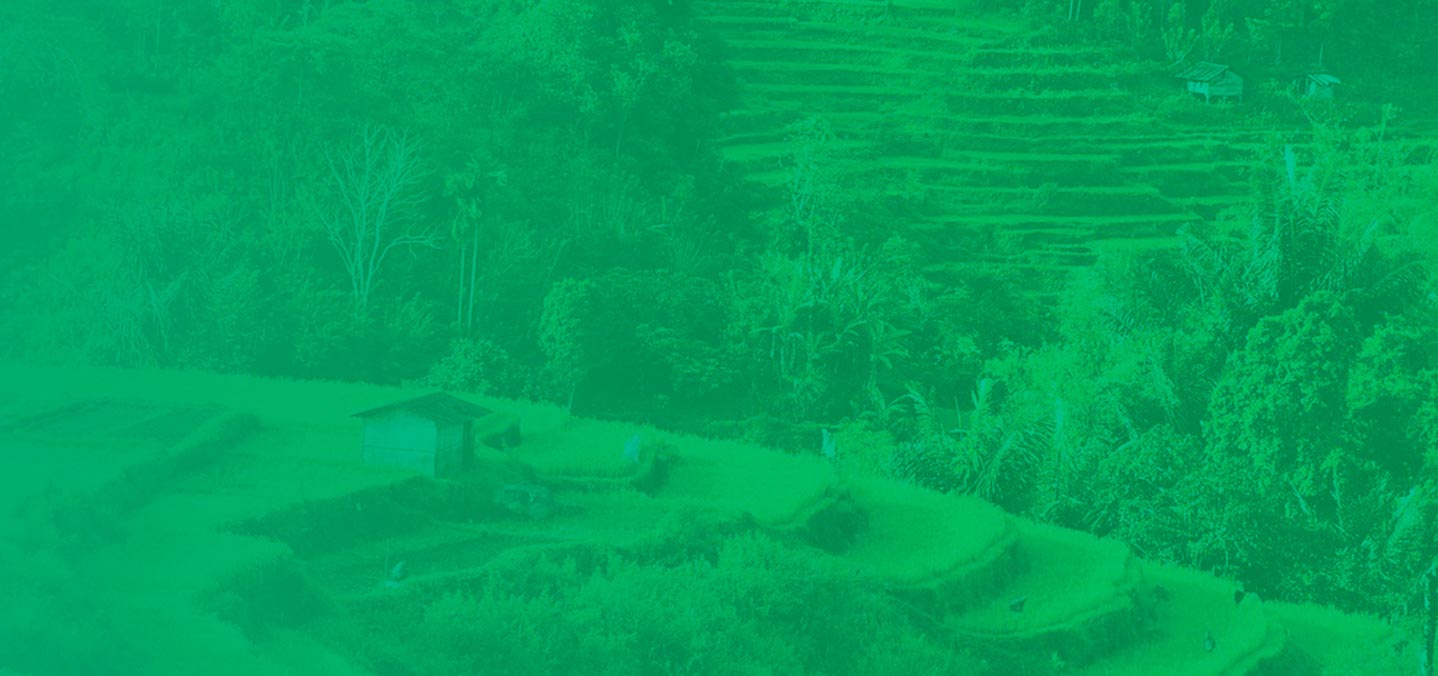
CIFOR’s research into tropical forests addresses some of the most pressing global issues of the day. Projects in local, national and transnational contexts examine the role of forests in people’s lives across the themes of environment, governance, livelihoods and gender, while building capacity and partnerships. Supported by an extensive communications program, all initiatives contribute to our overarching aim: delivering positive outcomes and impacts.
CIFOR’s global comparative study on the role of forests in climate change mitigation and adaptation moved into its second phase, to help pave the way for transformational change.
Food security and nutrition have rapidly become a central research theme for CIFOR, which is taking part in several major policy processes on the dietary contribution of forests and trees.
The inaugural Global Landscapes Forum, organized by CIFOR and its partners, brought together the forestry and farming sectors to inform the global agenda on some of the world’s most challenging issues.


The pace and impact of migration are increasing. Yet its link to forests is relatively unknown. In one possible scenario, people stop farming and move to the city – and fewer trees are felled for agriculture. In another, urban migrants struggle to find jobs and so return to clear forests to satisfy their growing urban needs.
Yet another scenario suggests that neither “urban” nor “rural” describes many tropical households or communities, as their members circulate between two or more localities in an increasingly complex multi-local pattern.
CIFOR recognized the gap in the world’s knowledge of this complex topic. In response, CIFOR organized a workshop in 2013 to bring together existing research, identify knowledge gaps and discuss who is best placed to meet the research needs. This laid the foundations for partnerships and positioned the link between migration and forests as an emerging research priority for CIFOR.

The government of the Democratic Republic of Congo (DRC) is working to improve its forest management and thereby help mitigate climate change. But the country faces numerous challenges, not least its weaknesses in forestry research. Building capacity in forestry is part of Forests and Climate Change in the Congo, a four-year project launched by CIFOR and its partners in 2013, with funding from the EU’s Global Climate Change Alliance.
Students at the University of Kisangani (UNIKIS) and three universities in eastern DRC will receive a quality education in climate change, sustainable forest management and forest governance. The project will invest in infrastructure at UNIKIS and improved Internet access for the smaller universities. CIFOR will provide scientific leadership and furnish students with a “living library” by providing reference materials on DVD.
When rural populations in the Congo Basin started noticing changes in weather patterns, many people couldn’t explain them, let alone knew what to do about them. But getting information on climate change to forest dwellers in Africa is difficult because of poor infrastructure – yet most people do have a radio.
So as part of the COBAM project, CIFOR and its partners tested a six-month radio program to educate people in the Congo Basin about climate change: its causes, its effects, and how to adapt. The program was called “Au rythme des saisons” (“Changing seasons”). To share information with the poorest people, programs in local languages got underway.
Estimated number of listeners to Au rythme des saisons
Started by CIFOR in 2004, the Poverty and Environment Network (PEN) is the largest and most comprehensive global analysis of tropical forests and poverty. PEN’s rich dataset is helping researchers to understand the role of forest and environmental income in rural livelihoods and poverty alleviation. The data analysis has yielded several potentially important and “myth-busting” results, such as:
n 2013, the dataset became publicly available for other researchers to use. PEN researchers are publishing their findings in a special issue of World Development in 2014.
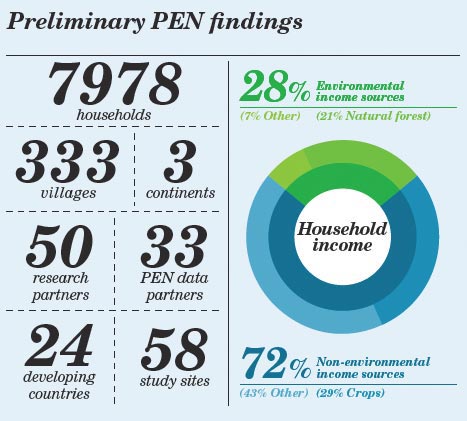
China’s National Forestry Economics and Development Research Center (FEDRC), a subsidiary of the State Forestry Administration, has gathered
a rich panel dataset as part of its monitoring and evaluation of the Conversion of Cropland to Forest Program (CCFP), the world’s largest reforestation project with more than 27 million ha of land converted. The FEDRC officially partnered with CIFOR in 2013, giving CIFOR unprecedented access to the CCFP database. Together, they are analyzing the data to determine the impacts of the program on land use, livelihoods and the environment. CIFOR is providing inputs to improve the survey design, methods and analyses.
The database is just one aspect of the partnership between CIFOR and the State Forestry Administration, which was renewed in 2013 with a three-year Memorandum of Understanding signed.
Nick Hogarth, CIFOR Project Consultant
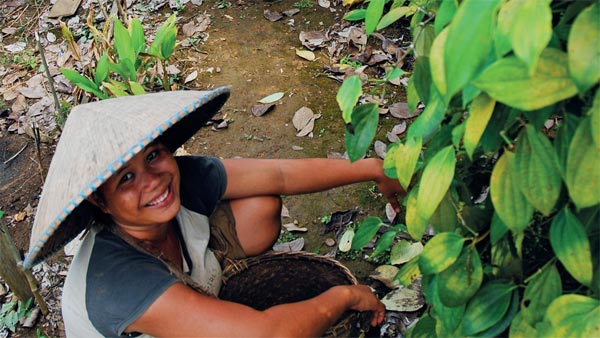
Most smallholders in Indonesia who run enterprises based on forest products cannot make the most of their business opportunities. In particular, competitiveness is low, partly because policies are not designed for their small-scale production and marketing.
In 2013, Indonesian researchers from CIFOR and the World Agroforestry Centre began working together in three sites across Indonesia to improve smallholders’ management of their forest-product businesses, and hence their livelihoods and land management. The project introduces integrated management, an approach that optimize the production and marketing of forest products. Efforts are supported by more cost-effective value chains and favourable policy and regulatory frameworks.
Crucial to the project are its collaborators, whose involvement ensures that impacts continue well after the project ends: Forestry Research and Development Agency (Ministry of Forestry), WWF Indonesia, University of Mataram, Farm Forestry Consortium, University of Western Australia, and Threads of Life.
The project will run until 2016 and is funded by the Australian Centre for International Agricultural Research (ACIAR).

Forests in West Africa are shrinking rapidly because of overuse. These forests, and the livestock, wildlife and people that depend on them, cross national borders – and so must forest policy.
Therefore, the member states of ECOWAS, the Economic Community of West African States, decided to work together to manage their forests. Back in 2006, with funding from FAO and IUCN, they launched the West African Forest Dialogue, and invited contributions from stakeholders and experts. CIFOR provided support to the process and advised ECOWAS experts on options for enhanced regional coordination of forest management.
In September 2013, following extensive studies and negotiations, ECOWAS adopted the Convergence Plan for the Sustainable Management and Use of Forest Ecosystems in West Africa.
Michael Balinga, CIFOR Scientist
For centuries, women have dominated the collection, processing and marketing of shea nut in Ghana. But the inclusion of cocoa-butter equivalents in chocolate manufacturing has led to changes in world markets and hence in local and regional trade. Middlemen are bulking up their purchases of shea nuts and shea butter, as new entrants seek to cash in — and women risk being displaced.
CIFOR analyzed the gender dimensions of the shea value chain in a study that is illustrative of how globalization and associated processes affect women. The analysis forms part of a growing research area: CIFOR is also exploring the gender dimension of other value chains, from furniture-making in Indonesia, to charcoal in east and southern Africa, to eru (spinach) in Cameroon.
Through this research, CIFOR aims to raise awareness among policymakers of how contemporary trade and investment patterns affect women and encourage greater gender equality in resource-use decisions.
Following the severe peat fires in Sumatra in June 2013, CIFOR scientists created a “burned area” map. They showed that it is possible to produce detailed maps of land use showing industrial plantations and fire-affected areas, using before-and-after-fire images from NASA’s recently launched LANDSAT 8 satellite. Since then, research has continued, with a paper for a peer-reviewed journal in preparation.
In one LANDSAT scene they found:
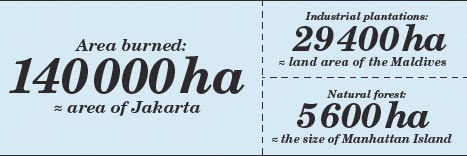
Field investigations are now needed to uncover the root causes of the devastating – and recurrent – fires, and find ways to prevent them.
The fast pace of policy reforms to transition to a market economy in Myanmar has brought not only a rush of investors into the country but also ambiguity over the scope of land and resource management and associated jurisdictions. This situation is likely to intensify pressures on the country’s forests and ecosystem services, as seen over the past decade in neighbouring Laos and Cambodia.
In August 2013, a delegation from CIFOR visited Myanmar to meet with the Minister of Environmental Conservation and Forestry and key ministerial staff. CIFOR and the government officials discussed Myanmar’s development priorities and how they could collaborate to benefit the country’s forests and millions of rural poor.
In addition, the delegates met with potential funding partners and research and civil society partners to better understand the changing social, economic and ecological landscape of Myanmar. They also began exploring opportunities for long-term research on the sustainable use of forests and mangrove ecosystems for improved local incomes, enabling governance conditions for local participation in economic growth, changing landscapes and tenurial conditions, and capacity building.
